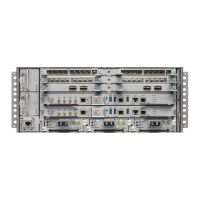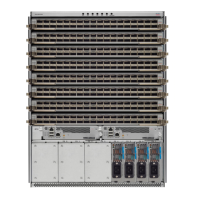Tagging IS-IS Interface Routes
This optional task describes how to associate a tag with a connected route of an IS-IS interface.
SUMMARY STEPS
1. configure
2. router isis instance-id
3. address-family { ipv4 | ipv6 } [ unicast ]
4. metric-style wide [ transition ] [ level { 1 | 2 }]
5. exit
6. interface type number
7. address-family { ipv4 | ipv6 } [ unicast ]
8. tag tag
9. commit
10. show isis [ ipv4 | ipv6 | afi-all ] [ unicast | safi-all ] route [ detail ]
DETAILED STEPS
PurposeCommand or Action
configure
Step 1
Enables IS-IS routing for the specified routing process,
and places the router in router configuration mode. In this
example, the IS-IS instance is called isp.
router isis instance-id
Example:
RP/0/RP0/CPU0:router(config)# router isis isp
Step 2
Specifies the IPv4 or IPv6 address family, and enters router
address family configuration mode.
address-family { ipv4 | ipv6 } [ unicast ]
Example:
Step 3
RP/0/RP0/CPU0:router(config-isis)# address-family
ipv4 unicast
Configures a router to generate and accept only wide link
metrics in the Level 1 area.
metric-style wide [ transition ] [ level { 1 | 2 }]
Example:
Step 4
RP/0/RP0/CPU0:router(config-isis-af)# metric-style
wide level 1
Exits router address family configuration mode, and returns
the router to router configuration mode.
exit
Example:
Step 5
RP/0/RP0/CPU0:router(config-isis-af)# exit
Enters interface configuration mode.
interface type number
Example:
Step 6
RP/0/RP0/CPU0:router(config-isis)# interface
GigabitEthernet 0/1/0/3
Routing Configuration Guide for Cisco NCS 6000 Series Routers, IOS XR Release 6.4.x
235
Implementing IS-IS
Tagging IS-IS Interface Routes
